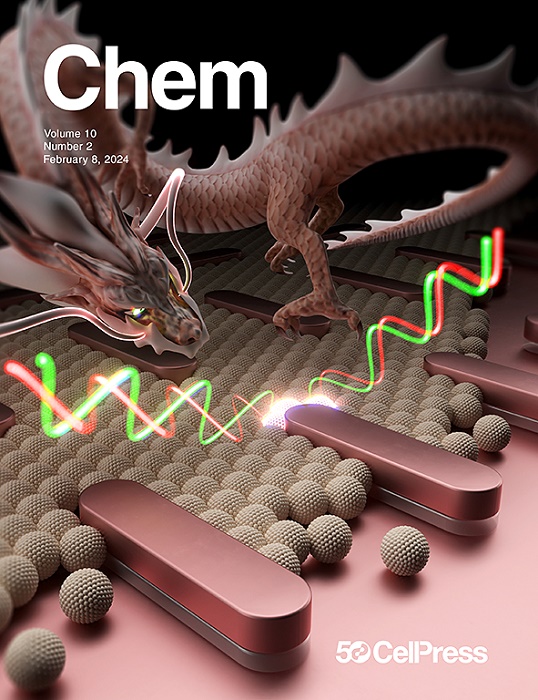质子驱动锂离子分离碱模板配位笼
IF 19.1
1区 化学
Q1 CHEMISTRY, MULTIDISCIPLINARY
引用次数: 0
摘要
从天然矿床中提取锂是能源密集型的,因为它与物理化学上相似的碱(Na+和K+)和碱土(Mg2+和Ca2+)金属离子共存。因此,从盐混合物中直接和特定地提取锂的方法对于确保世界经济脱碳所需电池的充足供应至关重要。本文介绍了碱金属模板配位笼的制备及其在锂萃取中的应用。在笼形框架内,质子改变了Li+和类似金属离子的相对结合亲和力:质子在笼形顶点附近与Li+结合,由于静电斥力增加、空间位阻增强和配位氮原子的可用性降低而排斥其他阳离子。我们在配位笼内开发了这种质子驱动的锂识别,使其能够从包括Na+, K+, Mg2+和Ca2+在内的盐混合物中提取Li+。本文章由计算机程序翻译,如有差异,请以英文原文为准。

Proton-driven lithium separation using alkali-templated coordination cages
The extraction of lithium from natural deposits is energy intensive due to its coexistence with physiochemically similar alkali (Na+ and K+) and alkaline earth (Mg2+ and Ca2+) metal ions. Methods for the direct and specific extraction of lithium from salt mixtures are thus essential to ensure an adequate supply of this metal for the batteries needed to decarbonize the world economy. Here, we present the preparation of alkali-metal-templated coordination cages and their application to lithium extraction. Within the cage framework, protons alter the relative binding affinities of Li+ and similar metal ions: protons associate exclusively with Li+ in close proximity at the cage vertices, repelling other cations as a result of increased electrostatic repulsion, enhanced steric hindrance, and reduced availability of coordinating nitrogen atoms. We developed this proton-driven lithium recognition within coordination cages into a separation cycle capable of extracting Li+ from a mixture of salts that includes Na+, K+, Mg2+, and Ca2+.
求助全文
通过发布文献求助,成功后即可免费获取论文全文。
去求助
来源期刊

Chem
Environmental Science-Environmental Chemistry
CiteScore
32.40
自引率
1.30%
发文量
281
期刊介绍:
Chem, affiliated with Cell as its sister journal, serves as a platform for groundbreaking research and illustrates how fundamental inquiries in chemistry and its related fields can contribute to addressing future global challenges. It was established in 2016, and is currently edited by Robert Eagling.
 求助内容:
求助内容: 应助结果提醒方式:
应助结果提醒方式:


